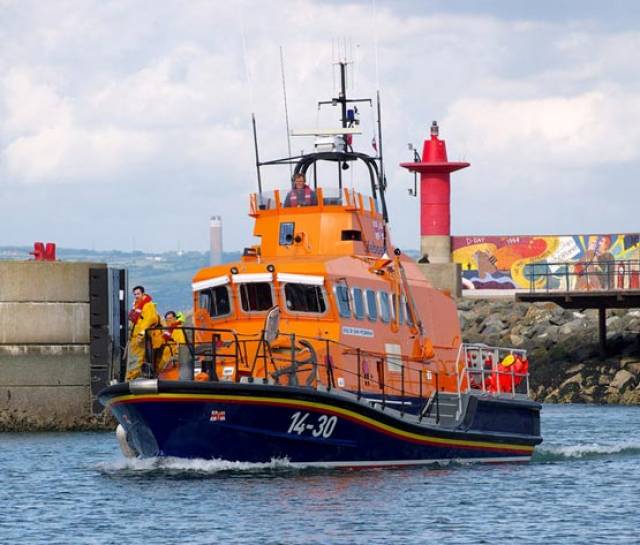#RNLI - Larne RNLI responded to two consecutive calls for help off the Antrim coast yesterday afternoon (Saturday 8 July).
The volunteer lifeboat crew was requested to launch their all-weather and inshore lifeboats at 2.17pm after Belfast Coastguard reported that a red survival suit was seen floating on the water.
Weather conditions were described as good at the time with clear visibility. Beaches were busy and there were several boats on the water.
The all-weather lifeboat under coxswain Chris Dorman and the inshore lifeboat helmed by Pamela Leitch launched and made their way to the area two miles south east of Hunter’s Buoy.
Together the lifeboats conducted a parallel search north for two miles in the direction of the tide before the inshore lifeboat crew spotted the object one mile into the search and recovered what turned out to be a fishing floatation suit from the water.
On passage back to Larne at approximately 3.15pm, the lifeboats were requested a second time by the coastguard, this time to follow up a report from a member of the public that a blue kayak had been spotted out of Portmuck Harbour.
The crew proceeded to the area and conducted a search but no one or nothing was found. The lifeboats were stood down on the understanding that the callout was a false alarm with good intent.
Larne RNLI coxswain Chris Dorman later commented: “While today’s call outs didn’t involve people being rescued, we would remind anyone who is enjoying the good weather and taking to the sea for activities at this busy part of the summer season to always respect the water.
“Plan your trip carefully mindful of the weather and tide times. Always wear a lifejacket and carry a means of communication. If you happen to lose a piece of equipment or clothing, please report it and should you or someone you see get into difficulty call 999 or 112 and ask for the coastguard.”
Earlier this week Larne RNLI were called to rescue two men on a yacht stranded by a fouled propeller, as previously reported on Afloat.ie.































































